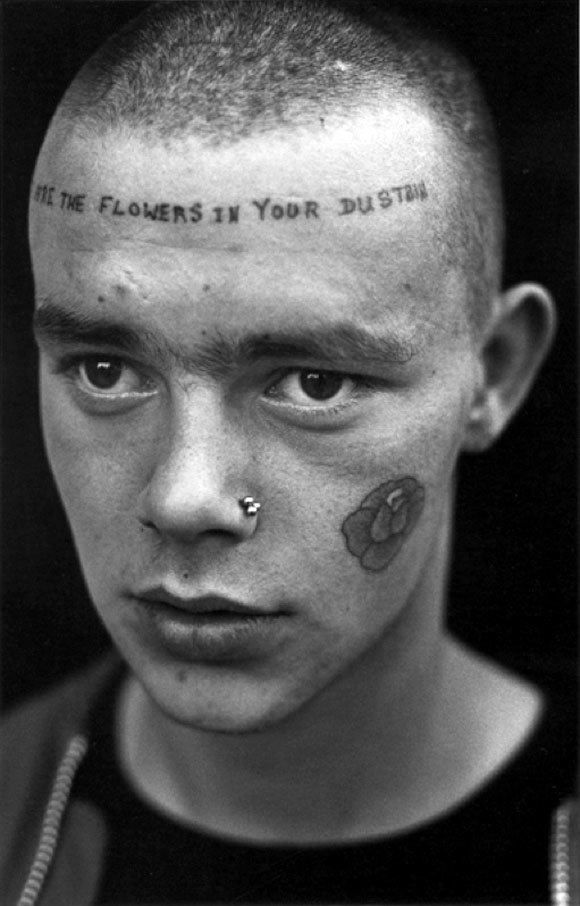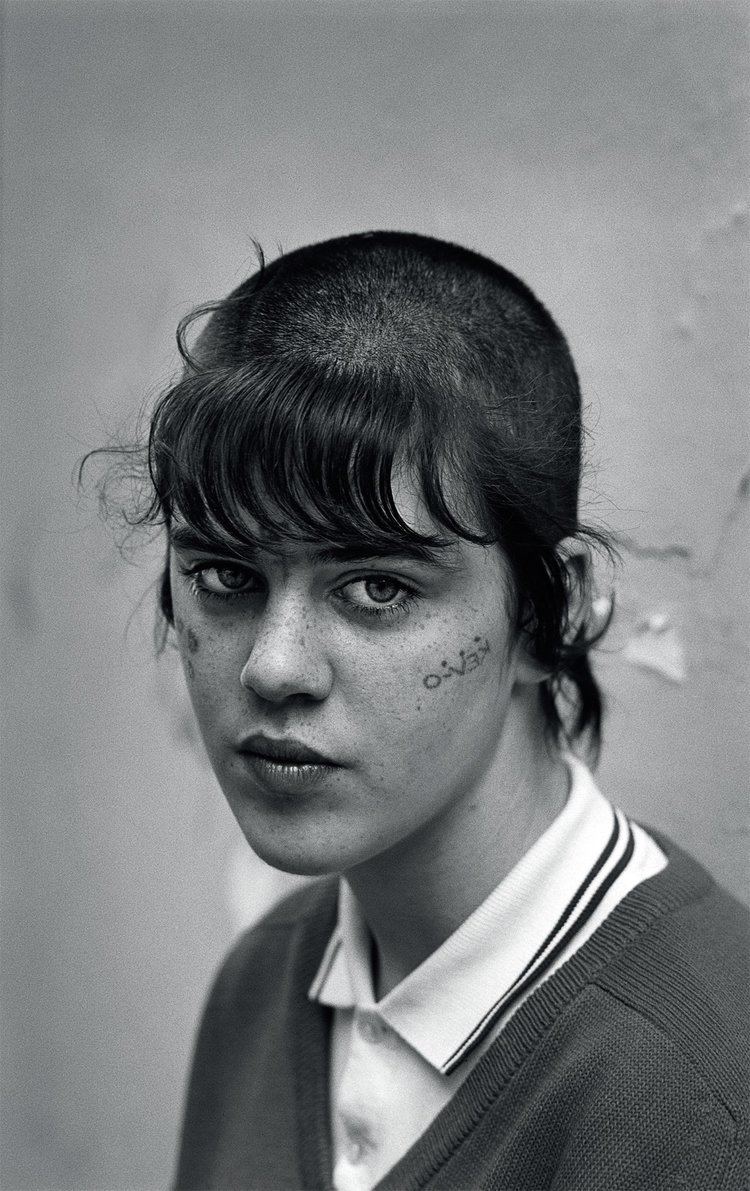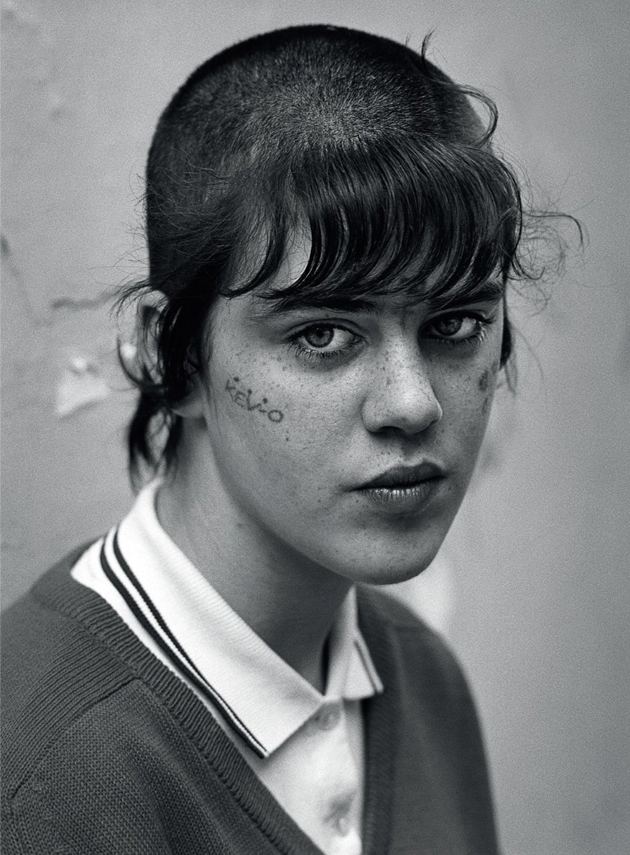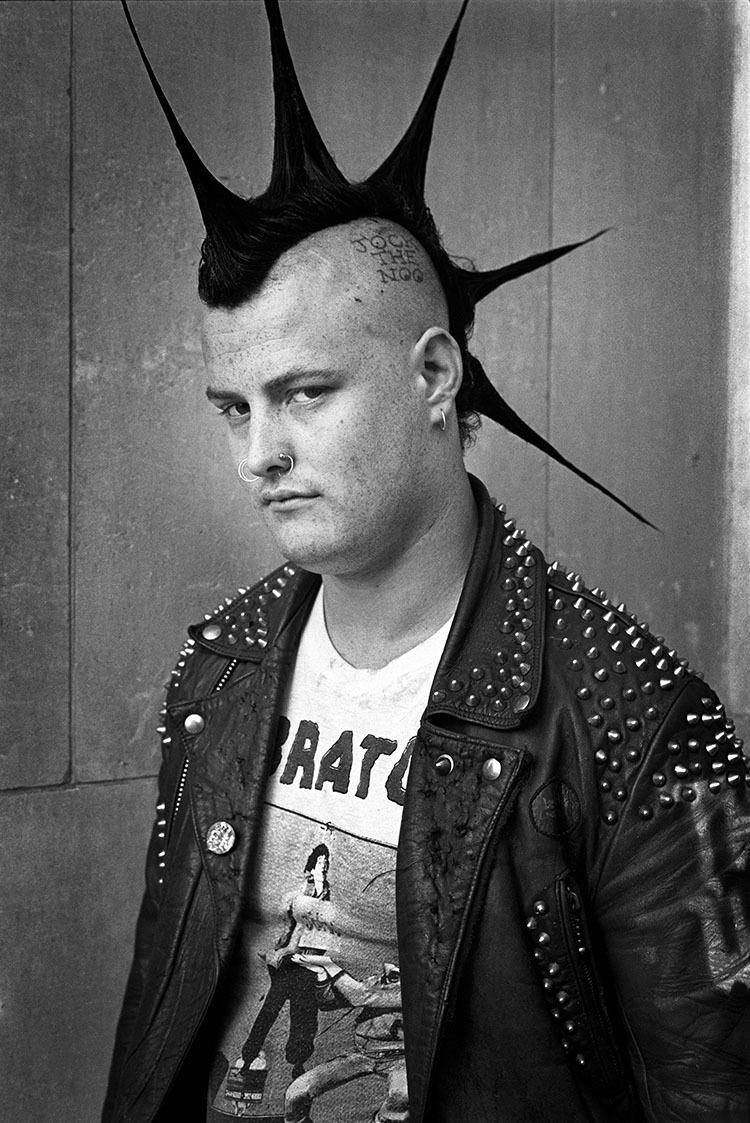Birth name Derek Ridgers Name Derek Ridgers Website Official website | Years active 1971–present Genres PhotographyartDesign Education Ealing Art College | |
 | ||
Occupation(s) Photographerart director Role Musical Artist · derekridgers.com Similar People Steve Strange, Siouxsie Sioux, Martin Degville, Boy George, Princess Julia | ||
Promo for my new book 78 87
Derek Ridgers (born 20 October 1950), is an English photographer with a career spanning over thirty years. He is best known for his photography of music, film and club/street culture – photographing people such as James Brown, The Spice Girls, Clint Eastwood and Johnny Depp – as well as politicians (Tony Blair), gangsters (Freddie Foreman), artists (Julian Schnabel), writers (Martin Amis), fashion designers (John Galliano) and sports people (Tiger Woods).
Contents
- Promo for my new book 78 87
- Dark Carnival trailer
- Early life
- Professional career
- Loaded
- When We Were Young
- Collaborations
- Publications by Ridgers selected
- Publications with contributions by Ridgers selected
- Solo exhibitions
- Exhibitions with others
- Collection
- Other interests
- References

Ridgers has also photographed British social scenes such as skinhead, fetish, club, punk and New Romantics.

Ridgers has worked for Time Out, The Sunday Telegraph, NME, The Face, Loaded, The Independent on Sunday, The Guardian, The Observer, The Sunday Times, The Independent, GQ, GQ Style, Melody Maker and Sounds.

Dark Carnival trailer
Early life

Born in Chiswick, West London, Derek Ridgers trained as a graphic artist at Ealing School of Art 1967–71, and where one of his fellow students was Freddie Mercury. Ridgers's love of music led him to attend many live events of the time, one of which was The 14 Hour Technicolour Dream.

Following art school, Ridgers went into advertising, where he worked as an art director for ten years. One of his clients was a camera company and he picked up the product and gave it a try. When he parted with the agency he decided to take up photography.

One of the first concerts at which he took photos was by Ron Wood, Eric Clapton and Pete Townshend at the Finsbury Park Rainbow, 13 January 1973.
Professional career
The emergence of punk rock in the late 1970S fascinated Ridgers. Among his first published work were pictures taken on a second-hand Nikkormat, bought as a cheap camera to take to punk nights at the Hammersmith Palais. Ridgers used a flash on a home-made bracket. During this time he photographed a very early Adam and the Ants, The Slits, Penetration, The Clash and The Damned. He had an exhibition at the ICA in 1978.
After leaving advertising to become a professional photographer, Ridgers began working for music and style magazines such as NME and The Face.
Ridgers's early photography of skinheads led to several situations where he was personally at risk from some of them until he became accepted as an observer. They were approachable and friendly. Many of these photographs were later collected in the book Skinheads (2010).
Morrissey used one of Ridgers's skinhead portraits during his Your Arsenal tour. As well as being used on the tour passes, the image was enlarged enormously and used as the stage backdrop for the tour and for Morrissey's 'Madstock' Finsbury Park gig of August 1992.
Ridgers has photographed the British fetish club scene, from the early days of its inception as a little-known underground scene – for example, the start of the Skin Two club in 1982, which was first held in Stallions nightclub in Soho – up until the Skin Two Rubber Ball and quasi-mainstream acceptability. His work also appeared in Skin Two magazine under the editorship of Michelle Olley. She wrote of his book (Stare) of this work:
Every midnight tribe is here – hippies, punks, ravers, goths, teds, mods and every pretty boy and dirty girl in between, shot in situ in their un-natural habitat. [. . . The book] manages to bring the glamour vixens and club kids together, creating a heady mix of reportage and eroticism. Uniquely, this is 'thrill of the moment' erotic realism, coming as it does directly from the subject, and not the photographer. He shoots it as he sees it, which makes this a rare and precious record of a certain kind of cheekiness, at a certain point in the evening, at a certain time in history.As well as his portrait-reportage work, Ridgers also began to amass commissions to photograph music and film stars of the era. Working predominantly for NME, but also for national newspapers and other publications, he has photographed Frank Zappa, John Lee Hooker, The Ramones, Prince, The Spice Girls, J. G. Ballard, Richard Harris and Martin Amis.
Loaded
Ridgers had already collaborated with the writer James Brown at NME. When Brown left to become the editor and co-founder – with Tim Southwell and Mick Bunnage – of Loaded magazine, Ridgers was asked to contribute. Ridgers was present at the inception of a magazine that at its height sold 400,000 copies a month.
As well as photographing a wide range of musicians, actors, writers and athletes, during his long tenure as a cover/features photographer at Loaded Ridgers would first establish his own page of club photographs called 'Getting Away With It', which would run for fifteen years until 2010, one of the longest running features in the magazine's history. Many of these black and white fetish club scene photographs were later included in the book Stare: Portraits from the Endless Night.
Loaded also gave Ridgers his own page, "The Derek Ridgers Interview", in which he told behind-the-scenes stories from his past photo shoots.
When We Were Young
When We were Young: Club and Street Portraits 1978 – 1987. collects together portraits of young skinheads, punks and new romantics from the seventies through to late eighties; many, like Boy George, Steve Strange and Spandau Ballet, were photographed while still unknown.
Derek Ridgers's compulsion to photograph London clubs over two decades was an extraordinary one. He has produced thousands of remarkable photographs of remarkable people, transient beings moving across an urban landscape, experimenters, flamboyant souls who cared more than anything about how they looked and whose greatest fear was of being ordinary.
But it was the ordinariness that Derek Ridgers glimpsed in these costumed characters that makes his photographs so powerful. Ridgers's photographs are an undeliberate chapter in a decade of English social and cultural history which changed the way we thought about music, fashion and consumption. It was the decade of the handmade and the customised, of Oxfam shopping, conspicuous sexuality, of excess, wide success and dismal failure.
Of Ridgers's photographs of this period, Val Williams writes:
While Meadows' subjects revealed themselves as gauche, inhibited and curious, Ridgers's young men and women inhabited the camera's gaze as performers in a very particular arena. But it was the ordinariness that he glimpsed in these costumed characters that makes his photographs so powerful – the people he photographed wore beauty like a mask. The worlds that Ridgers photographed were small ones, peopled by young men and women who were captivated by the idea of image. His photographs do not search souls, they look at surfaces; these are not so much portraits as documents. . . . His subjects knew the rules of photography, knew not to smile or gesticulate – they were always still, needing to be recorded, longing for celebrity. Ridgers's photography captured the transitory nature of culture, a fleeting glimpse into what arrives, passes and is gone.
Collaborations
In 2010, Ridgers collaborated with designer and printer Danny Flynn in an exhibition at Ketchum Pleon entitled Every Bodies Enemies. The pieces combined Ridgers's portraits of musicians, film makers and actors, such as Keith Richards, Kylie Minogue, Nick Cave, Dennis Hopper, John Lee Hooker, David Lynch, Elvis Costello and Skin with Flynn's unusual screenprinting technique of printing using everyday powders such as sugar, salt, custard and raspberry powder.
Examples of the work produced for the Every Bodies Enemies gallery show, London:
Publications by Ridgers (selected)
Publications with contributions by Ridgers (selected)
Solo exhibitions
Exhibitions with others
Collection
Ridgers's photography is held in the following collection:
Other interests
Ridgers is a keen amateur poker player after developing his taste for the game when he covered the World Series of Poker in 2000 for Loaded magazine, photographing the event and the participation in it of the British champion Dave Ulliott ('Devilfish').
Ridgers is a lifelong fan of the English football team, Tottenham Hotspur, is a Tottenham Hotspur Supporters Trust board member, and has designed the Trust ads and literature.
